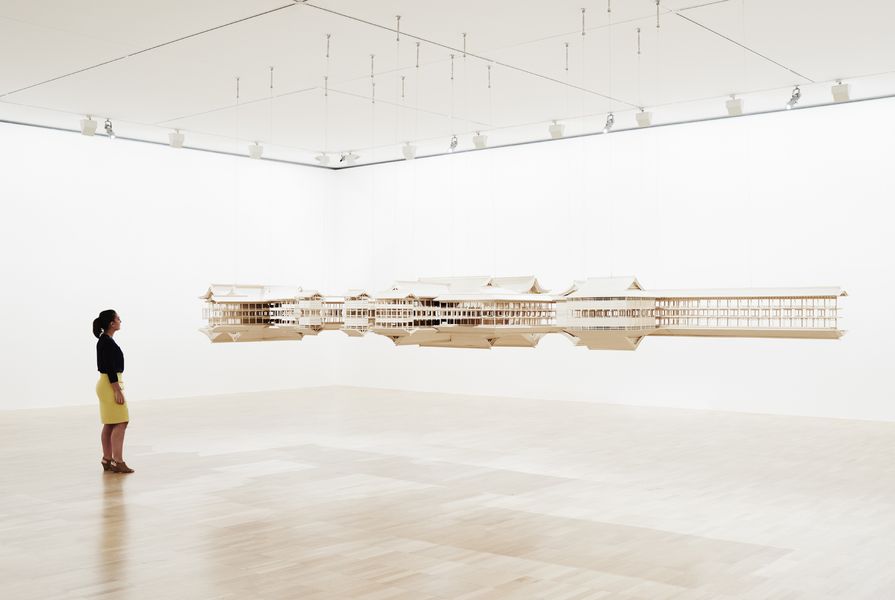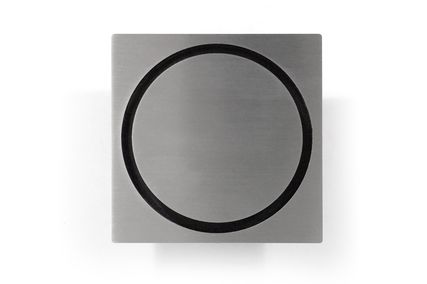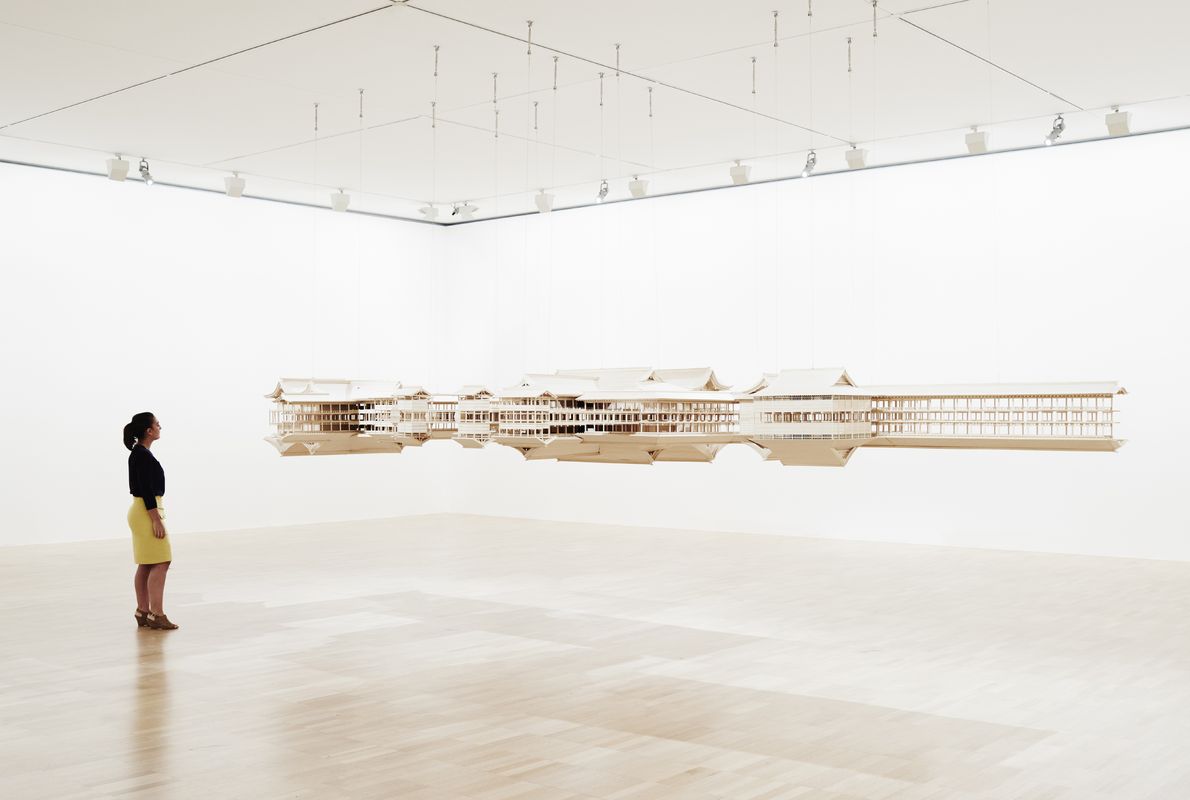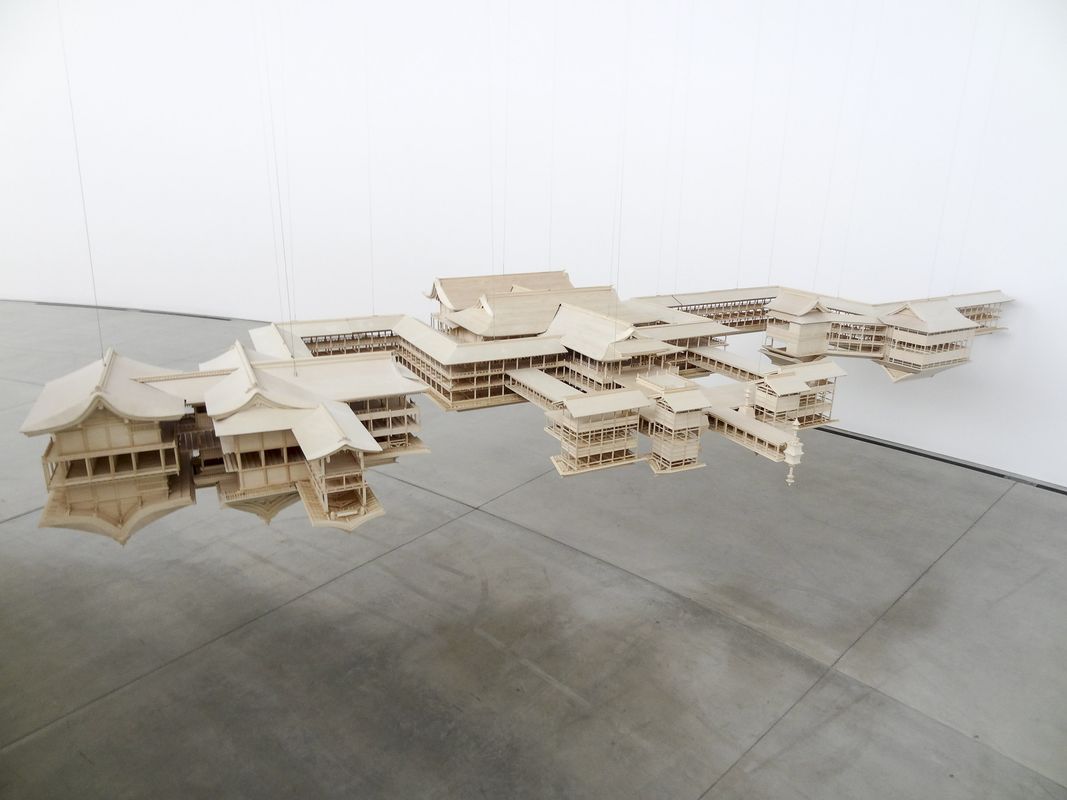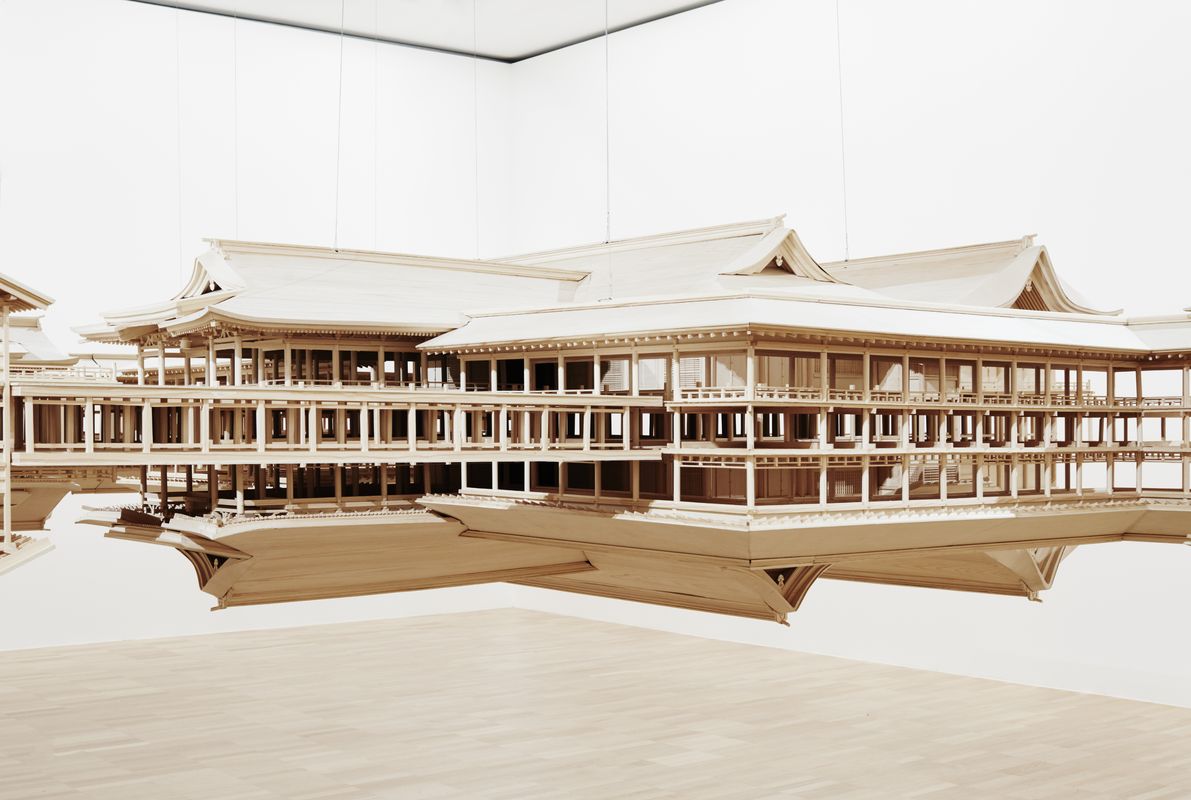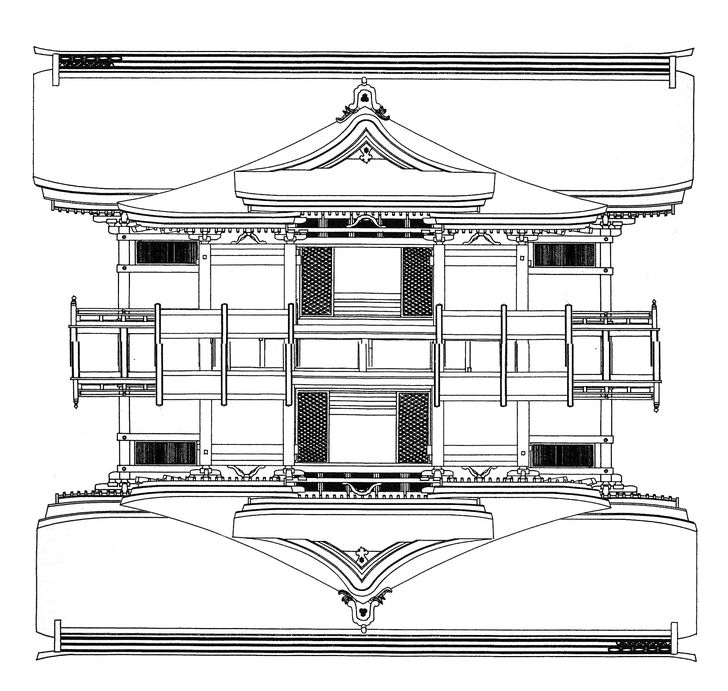
Artist’s drawings for Reflection Model (Itsukushima) 2013–14
Image: © Takahiro Iwasaki, courtesy of the artist and ARATANIURANO
Much as you’d expect of programming with ‘blockbuster’ ambitions, the National Gallery of Victoria has opted for the pulling power of name-brands in its 2014/2015 summer exhibitions. But while Jean Paul Gaultier’s glitzy glad rags compete for attention with the bums and willies of tragicomic doodler David Shrigley on the ground floor of the NGV International, just upstairs one of the NGV’s newest commissions offers an opportunity for quieter reflection.
Reflection Model (Itsukushima) by Takahiro Iwasaki meticulously recreates the Shinto shrine of Itsukushima, most famous for its Torii gate on the tidal flats of Japan’s Inland Sea, as a ‘floating’, 8m x 8m timber model that also includes the temple’s ‘reflected’ inverse image. NGV Director Tony Ellwood has described Iwasaki as one of the leaders of Japan’s new generation of young artists. Iwasaki has garnered attention on architecture and design blogs in the past for his tiny miniatures of urban and architectural forms (electrical towers made from toothbrush bristles, or topographic maps carved from rolls of electrical tap), artful keepsakes that recall traditional Japanese netsuke. Reflection Model (Itsukushima) speaks strongly, too, of Japanese history and tradition.
Itsukushima temple was established in the year 593 in the city of Hatsukaichi in Hiroshima Prefecture, Japan, and during the sixteenth century became widely known as one of Japan’s Nihon Sankei (three most celebrated sights). The shrine is constructed over tidal flats that allow the entire complex to float and reflect on the water’s surface as the tide rises – a literal play on the Japanese Shinto and Buddhist interpretation of Nirvana as a ‘floating world’ beyond normal experience. As the NGV’s Asian Art curator Wayne Crothers has written, Iwasaki’s Reflection Model series, of which Itsukushima is the third and largest sculpture, uses this principle both to pay homage to these historical architectural masterpieces and to create a new dreamlike experience of weightlessness and paradise.
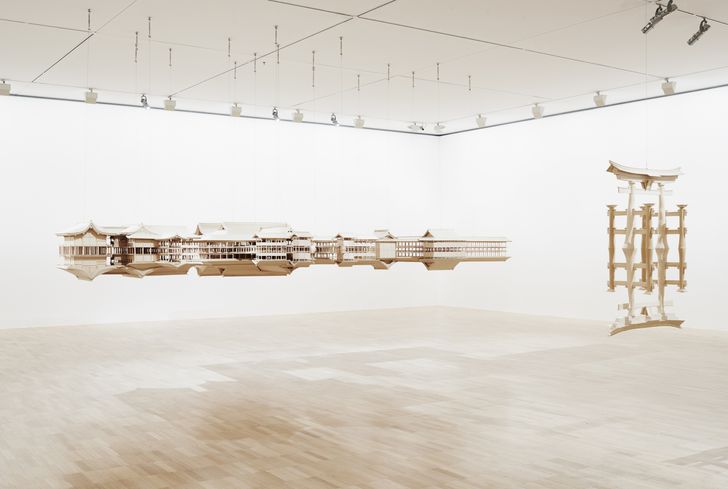
Takahiro Iwasaki, Reflection Model (Itsukushima) 2013–14, Installation view at NGV, Melbourne (Felton Bequest, 2014)
Image: Brooke Holm
The sculpture is primarily constructed from the traditional building material of Japanese cypress wood, while the roofs of the central pavilions have been coated with a basswood veneer. In the tradition of Japanese architecture, Iwasaki has maintained the timber’s natural finish with no treatment or coatings, so that it will gradually turn silver over time, while also incorporating the concept of ‘durability found in flexibility’ that has been a key to creating earthquake-resistant buildings in Japan. When suspended in position, the fourteen individual parts nestle into each other with a slot and tenon system that does not lock them firmly in place. This, in the vein of Taoist philosophy, creates strength through flexibility and in doing so allows the eight-metre-wide model, with its fragile and delicate components, to move without causing stress points and breakage.
As Crothers points out, Iwasaki can be seen as a present-day practitioner and custodian of these ancient skills, as well as an artist that takes us on a journey beyond our everyday experiences.
Takahiro Iwasaki: Itsukushima Reflection Model will be on show at the NGV International until 6 April 2015. Entry is free.

